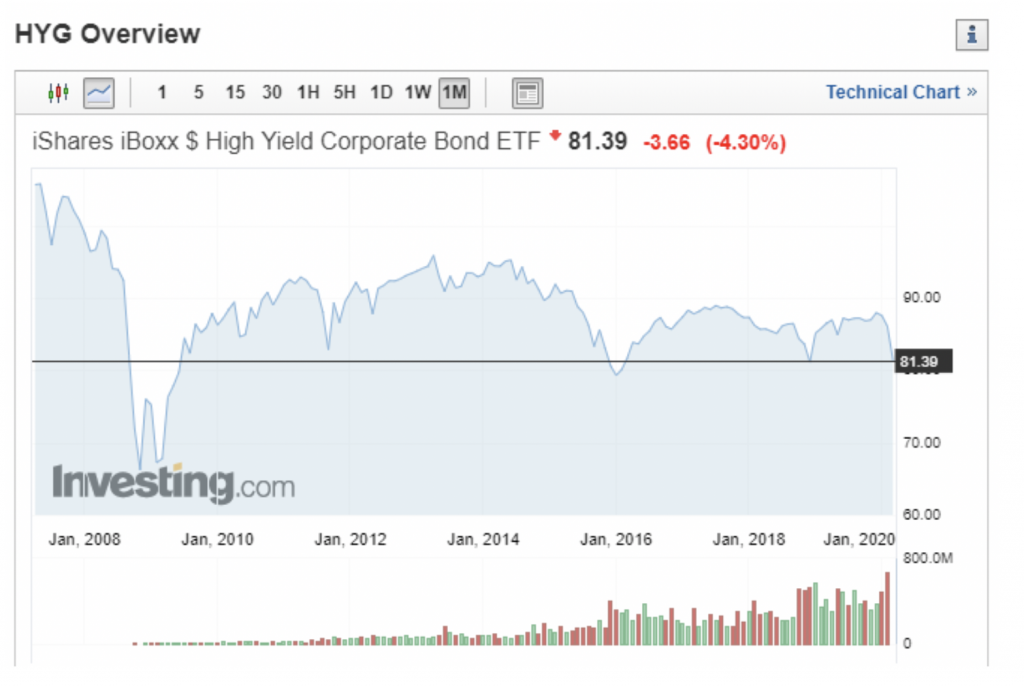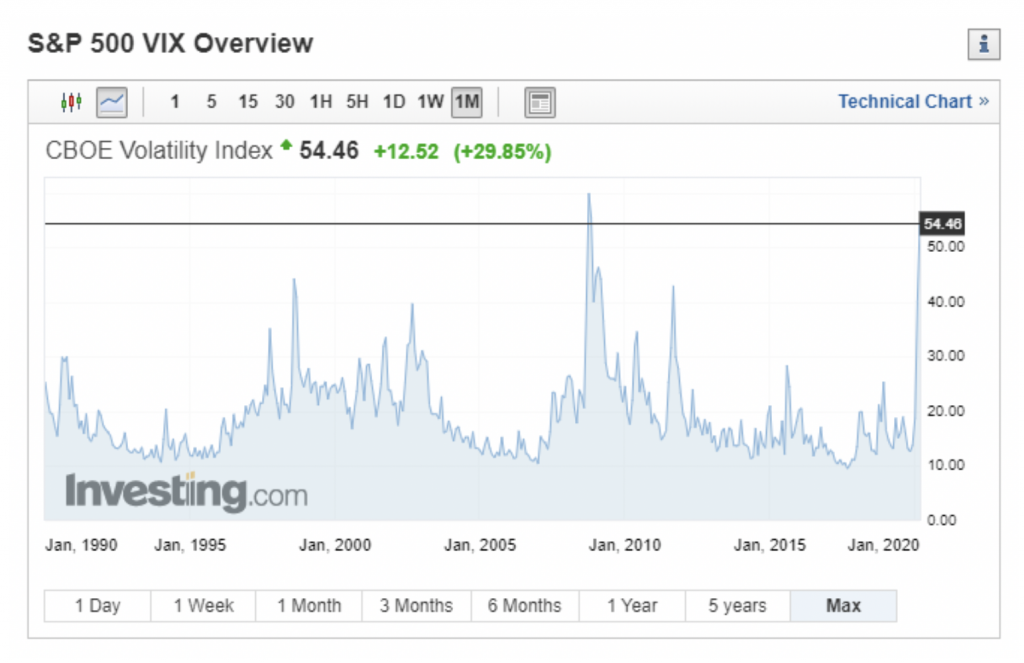
Australia’s worst equity performance day since the GFC – some observations
Yesterday saw the ASX 200 Index sell off a whopping 7.3 per cent in what was the most brutal fall in our Australian equity market since 10 October, 2008, which was in the height of the GFC.
From the peak just 13 days ago the ASX 200 has dropped 19.6 per cent which technically puts it in “Bear Market” territory when it hits 20 per cent. Taking into account the market moves this morning, then we have tipped over that threshold.
The combination of investors’ fears around the growing coronavirus impact on global growth coupled with a fierce price war in the global oil markets, which could spill over into already glittery credit markets, has been the main reasons put forward for the savage falls.
By the end of the day Woodside fell 18 per cent, Santos dropped 27 per cent and Oil Search plunged a staggering 35 per cent. Energy companies account for about 11 -12 per cent of the high-yield credit market in the US; a falling oil price makes it harder for these energy companies to repay their loans and raises the risk of defaults and distress in credit markets.
We can look to the iShares ETF which tracks the US High Yield Corporate Bond market and as can be seen below this market has sold off significantly over the last couple of weeks and materially last night.

Source: Investing.com
As expected the US equity market sold off heavily on open and it was not long before the American stock exchange shut down trading for 15 minutes to let panicked investors reassess the situation and prevent a 1987 stock market crash scenario, which lead to a 23 per cent stock market fall in one day. By the end of the day the S&P 500 lost 7.6 per cent. The other startling move last night was in the US 10-year bond market where we saw the yield collapse to just 0.34 per cent, but as of this morning, we saw it settling at 0.68 per cent. The S&P 500 VIX Index is a real-time market index that represents the market’s expectation of 30-day forward-looking volatility. Derived from the price inputs of the S&P 500 index options, it provides a measure of market risk and investors’ sentiments. It is also known as the “Fear” Index. As can be seen in the chart of the VIX last night, the index closed at its highest level since the 2008 GFC. A very good indicator that there is a lot of fear out there.

Source: Investing.com
There is definitely a lot to take in for investors but coupled with all this uncertainty is the growing central bank monetary support who are slashing rates and extending bond buying programs where necessary. Furthermore, global governments are gearing up to provide massive potentially coordinated stimulus packages which will surely gives markets a huge boost. But at this stage we don’t know when and how much.
We here at Montgomery have been building cash in our domestic equity portfolios (currently around 30 per cent) and will be looking to deploy this when we feel the opportunities far out-weigh the risks. Over the past couple of years, we had deliberately tilted the portfolio to more conservative/ defensive line up of businesses that have provided good downside protection in this violent market sell off. We are spending a lot of time looking at what a recovery might look like and how best to position ourselves to take advantage of the rather indiscriminate selling that panicked sellers offer up. We will talk more about this in the days and weeks ahead. Calm heads are required when all else are panicking.